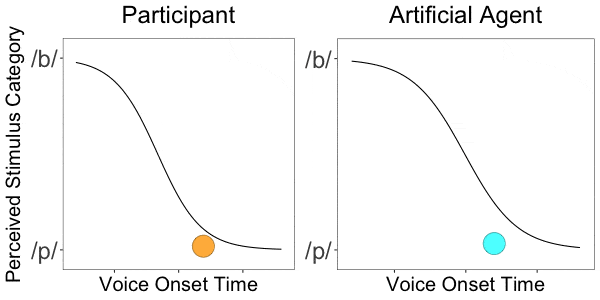
Participants were asked to identify a sequence of English speech sounds as “ba” or “pa”, together with an (artificial) partner. After each response, they were informed about their partner’s response, same or opposite. The responses of the artificial agent were covertly manipulated along a number of dimensions.
In this animation, each circle represents the response provided by the participant or the artificial agent to each sound, and the sigmoid curve represents the underlying categorization function, updated iteratively following each response. Participants converged towards the artificial agent in the location of the boundary between the two phonemic categories.
A Bayesian model of speech perception provides the framework to account for how listeners may infer the parameters that govern their partner’s perception.
Noël Nguyen, Leonardo Lancia, Lena Huttner, Jean-Luc Schwartz, and Julien Diard.
Listeners’ Convergence Towards an Artificial Agent in a Joint Phoneme Categorization Task.
Glossa Psycholinguistics 3 (1), 2004 — @HAL
